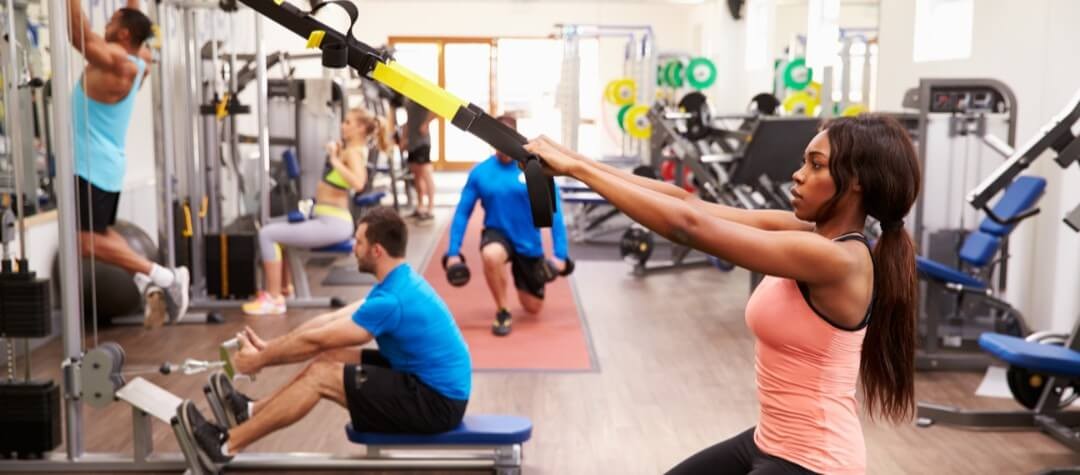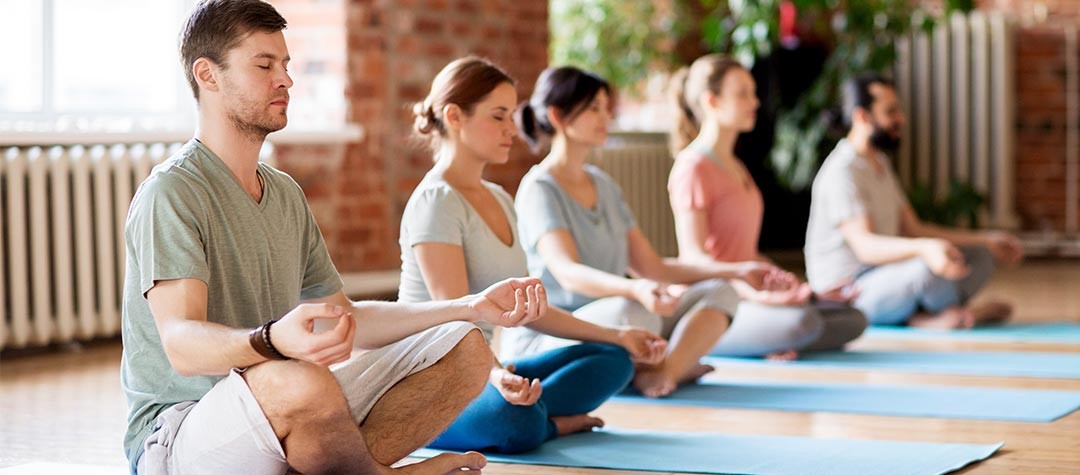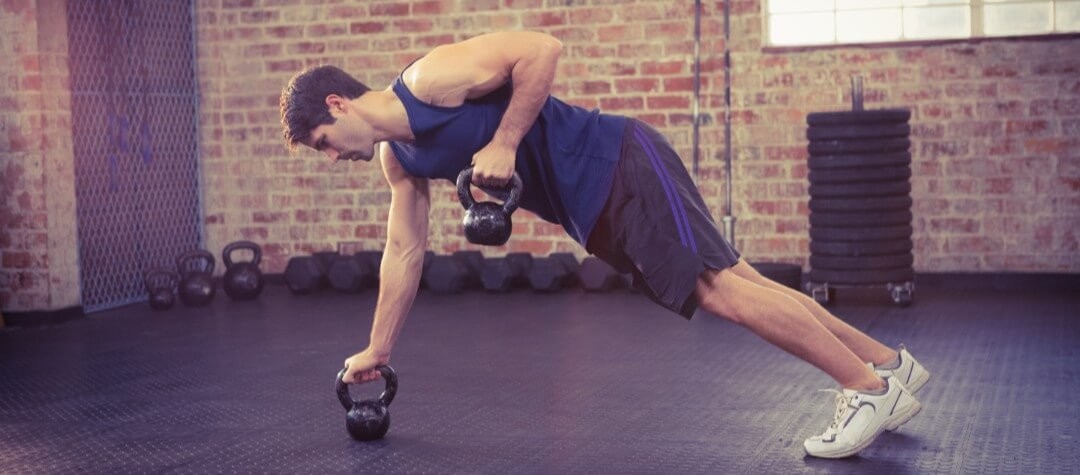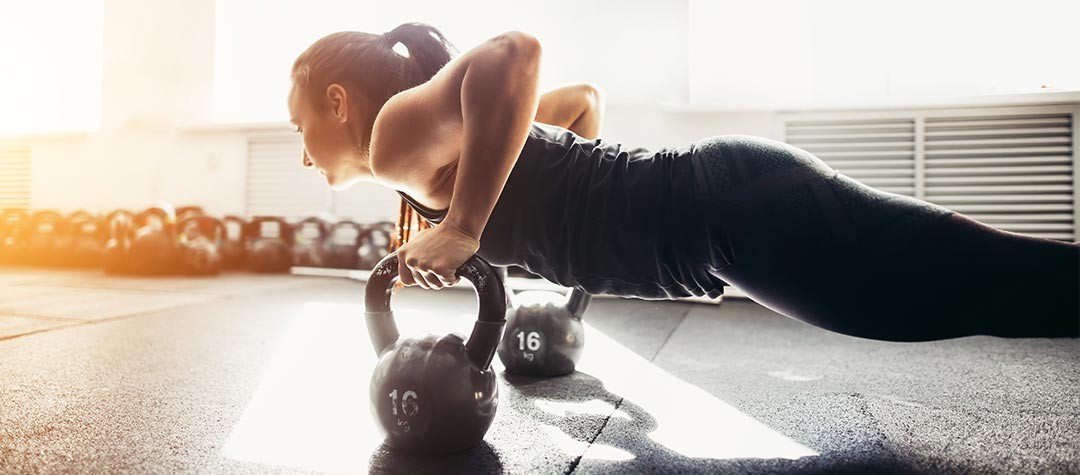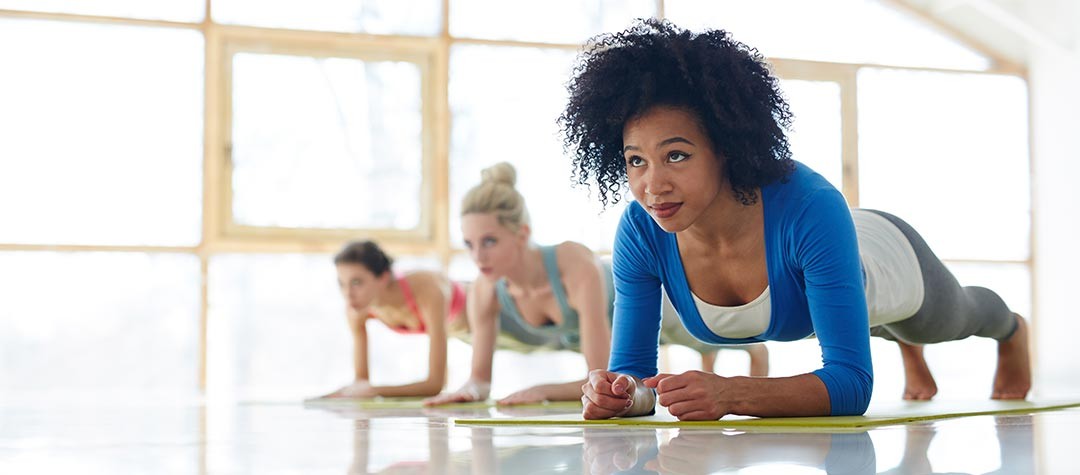Resistance training can be highly beneficial if done correctly. Find out about the benefits of resistance training and learn how best to do it with some example resistance training sessions.
‘Strength training’, ‘Pumping iron', 'hitting the weights', and 'bodyweight exercises' are all common expressions that refer to what we consider forms of resistance training. But what exactly is resistance training and how do you do it correctly?
What is resistance training?
The dictionary definition for resistance training is: ‘training designed to increase the body's strength, power, and muscular endurance through resistance exercise – the most common form of which is weight training’. In other words, when you do a resistance training session, you are trying to get stronger by conditioning your muscles to lift either heavier weights or a certain weight for a longer period of time.
Resistance training is an extremely important component of your fitness programme, because as you age your muscle mass will naturally be lost, unless you exercise to counteract the aging effects. Also, modern lives are generally becoming more and more sedentary.
Different types of resistance training
The phrase ‘resistance training’ makes most people immediately think of the gym. Gyms are excellent places to work out with weights, as they will usually have a variety of fixed weight machines and dumbbells – but there are other forms of resistance training that you can do as well. Bodyweight exercises , circuit training classes and rehabilitation exercises (using thera-bands to provide resistance) are all forms of resistance training and can also improve your muscular strength.
Resistance training benefits
A resistance workout will give you a broad range of health and fitness benefits, including:
- Increased strength. Providing that you follow a correctly structured training programme, you can improve your strength in every muscle. Everyday tasks such as lifting, shopping, DIY and gardening chores then become easier and will be within your capabilities.
- Increased calorie burn. The energy cost of toned, stronger muscles results in your metabolic rate (the speed at which your body burns calories) rising. These calorie-burning benefits occur not only when you are exercising, but 24 hours a day! Every additional pound of muscle on your body will burn an extra 50 calories per day – which equates to five pounds of body fat per pound of muscle every year!
- Improved posture. When you strengthen your body correctly, you can address muscle imbalance and realign common postural problems such as a tight lower back, rounded shoulders and weak abdominal muscles. The end result is that you’ll be able to walk tall, reduce discomfort, and feel better.
- Reduced risk of illness. Studies have shown that a regular programme of resistance training increases the body’s production of the special white blood cells responsible for attacking tumours and viruses. These effects are particularly pronounced in people who have previously not been involved in resistance training before – so regular resistance training can enhance your immune system.
- Reduced risk of injury. Stronger muscles mean a stronger body, which also means you’ll have less chance of picking up a strain or muscle injury because your muscles will be better conditioned and used to work.
- Improved looks! Everyone wants to look their best, and toned muscles will go a long way to achieving that goal. Plus the combined effects of the other benefits above will all contribute to you looking generally healthier!
How much resistance training should I do?
To get optimum benefits from your resistance training workout, you should aim to do two separate 45-minute sessions each week. Less frequent workouts, for example one session per week, will still bring benefits, but exercise gains start to diminish after a 72 hour period has elapsed – so two sessions, separated by 48-72 hours, will bring the greatest results.
If time constraints make it difficult to fit two sessions into your week, try combining resistance with cardiovascular (CV) training in one session and repeat it twice weekly. Circuit training classes achieve just that – and although they are challenging, they will pack more into an hour-long session than a single discipline alone.
Resistance training precautions
If you are at all unsure about starting a resistance training programme or have not exercised for some time, then get the all-clear from your doctor before you begin. Also, you should get professional instruction on correct lifting technique so that you learn the right way to handle and lift weights. Time spent at the outset of your strength training programme learning the correct training protocols will pay long-term dividends in faster and greater improvements, and will also help to ensure that you don’t suffer an injury which will halt your progress.
Your resistance training workout
Whenever you do resistance training, it is very important to keep your body in balance. Simply working the ‘mirror muscles’ (i.e. the ones that you see when you look in the mirror, such as the stomach and chest) will result in postural imbalances and potentially also injury. For example, if you exercise the chest, you should balance that with upper back exercises, and if you carry out some sit-ups, do the same number of lower back exercises as well. Providing you train sensibly and follow a set training plan, by doing some resistance training exercises you will enjoy a huge range of health and fitness benefits – and feel and look good too.
How to get the max out of your resistance training
A staple of any good gym is a selection of resistance training equipment that can be used to tone muscles, build strength, help correct muscle imbalances and align posture. Check-out the equipment options for resistance training and their pros and cons:
| Equipment | Description | Pros | Cons |
| Resistance training machines | Dedicated machines that are designed to exercise a specific body part or parts. E.g. Shoulder press machine, Lat pull-down machine. |
1. Simple to use, particularly if you’re new to resistance training. 2. Require less specific technique than other equipment. 3. Can be useful for less able-bodied exercisers. 4. Correct design can help exercise difficult areas, e.g. back. |
1. Rarely allow for completely functional muscle training. 2. Often don’t train muscles through their complete range of movement. 3. Usually limited to main muscle groups, e.g. chest, legs, back, shoulders. 4. Generally you need a machine for each body part. |
| Dumbbells (sometimes called ‘free weights ’) |
Pairs of hand weights, usually on racks, with weights ranging from 1kg (2lb) up to 40kg (90lb) each. | 1. Excellent for training most muscles. 2. Versatile: many different exercises can be carried out with one set of dumbbells. 3. Permit fully functional training through a muscle’s complete range of movement. |
1. Require specific technique for safety and full training gains. |
| Pre-formed barbells | A selection of bars with permanently attached weights at each end. Usually on racks with weights ranging from 4kg (10lb) to 30kg (65lb) per barbell. | 1. Benefits are similar to dumbbells. 2. Generally, greater weights can be lifted if required than with dumbbells because both arms are used at the same time. |
1. Require specific technique for safety and full training gains. 2. Slightly less versatile than dumbbells as both hands need to be on the bar at any one time. |
| Adjustable barbells | Similar to pre-formed barbells but different value weight disks can be attached at each end. | 1. As per pre-formed dumbbells. 2. Can select exact weight required for each exercise. |
As per pre-formed dumbbells. |
| Bodyweight | Many exercises can be carried out without equipment, solely using your own bodyweight. E.g. press-ups, sit-ups, etc. |
1. Can be carried out anywhere. 2. Often require less specific technique. |
More limited range of exercises can be carried out. |
Resistance training: what to look for
With resistance training, there is no ‘best’ piece of equipment. The idea of resistance training is to exercise all the muscles that support the body and hold the skeleton together. Therefore it is important to follow an all-over body programme of exercises in order to keep your body in complete postural alignment. Consult the chart below to see the primary areas to exercise:
What muscles should I exercise for an all-over resistance programme?
- Chest
- Upper back
- Shoulders
- Biceps (front of upper arm)
- Triceps (back of upper arm)
- Abdominals (stomach area)
- Obliques (sides of abdomen)
- Lower back
- Legs
- Core (deep postural muscles)
Training tips for resistance exercise
Similar to any training session, it is important to include a gradual warm-up at the start of your session and finish with a cool-down at the end. Both your warm-up and cool-down should be for a minimum of five minutes.
- Starting out training
As with anything new, it is far better in the long run to learn correct technique at the outset rather than later when bad habits will have to be ‘unlearned’. Additionally, if not executed safely, resistance training with incorrect technique carries the risk of injury, so always seek professional advice before you begin. For basic body conditioning, where you are gently introducing your body to resistance exercises, machines can be a great start. Once you have ‘kick-started’ you routine, adding dumbbell and barbell exercises will bring greater benefits.
- Next steps for resistance exercise
Always start with a comfortable weight, one that you can handle easily. Whenever you exercise, a weight should never be too heavy. Additionally, whilst you are learning the technique and proper execution of the exercise, it is vital that you can complete all the movements correctly so that the movement pattern becomes ‘keyed in’.
- Progressing in resistance training
Never sacrifice technique in order to progress. It can be tempting to compromise the correct execution of the exercise as you push harder or try for an additional repetition. Resist the temptation and let your body’s natural adaptation determine your rate of progression.
- Resistance training session ideas
Toning circuit
This session is a great cardiovascular and resistance training combination that is ideal for an all-over toning programme.
- Warm-up.
- Complete a set of 15-20 repetitions of up to 10 different exercises.
- After finishing each exercise, move straight on to the next, with no recoveries.
- When the set is complete, choose a piece of CV equipment for a 5-10 minute workout.
- Complete a full second circuit of exercises, same repetitions, no recoveries.
- Cool-down and stretch.
Strength session
The strength session focuses on building muscle strength and so fewer repetitions are used.
- Warm-up
- Carry out 3 sets of 10, 8 and 6 repetitions of each exercise selected, allowing 1-2 minutes recovery between sets and also between the different exercises.
- Cool-down and stretch.
Mix up your exercises
The key to successful and enjoyable resistance training sessions is to continually vary the exercises that you do. If you carry out the same exercises every time, your body adapts – and then plateaus. If you continually re-challenge your body with different exercises, repetitions and techniques, your training gains are far greater. Also, your programme is more varied and interesting, so you never get bored either.

